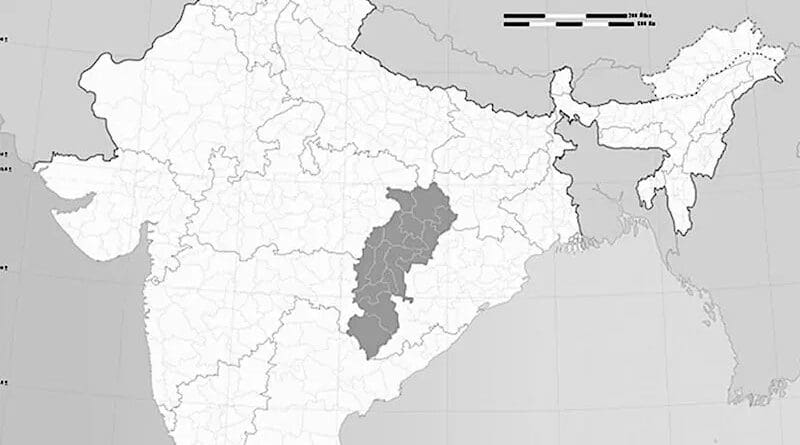India’s Anti-Naxal Operations: A Monumental Blunder In Chhattisgarh – Analysis
At the outset, the operation launched by the joint forces in Chhattisgarh’s Bijapur district that claimed the lives of 17 extremists, appeared too perfect to be true. A meticulously planned operation, security forces encircling Maoists from three sides, an encounter that not just eliminated a record number of extremists but also recovered their dead bodies, no fatalities among the security forces — for a regular follower of left-wing extremism in India, none of these characteristics has ever been associated with the security force operations in the Maoist strongholds.
And, as expected, skeletons tumbled out of the closet within a day. What initially had been projected as a success par excellence for the security forces, an opportunity for basking in glory which Home Minister P Chidambaram did not give a miss, the operation turned out to be a monumental embarrassment. A majority among the killed appear to be civilians — poor and unarmed tribals — who could very well have been forced by the Maoists to attend the meeting that became a target of the operation.
Irrespective of what the inquiry committees — both official and non-governmental — discover, it is beyond doubt that the Indian State has gravely erred in its latest counter-insurgency operation and has indeed ended up killing non-combatants. And worse still, even as none of the knotty questions regarding the circumstances leading to the death of civilians has been answered, officials have stuck to their Maoists-versus-the security forces narrative and are waiting for inquiry committees to draw conclusions.
David Galula, the French military officer whose writings are Bible for COIN practitioners, spoke of the concept ‘population is the prize’, indicating that the civilians must be protected and turned over to the side of the security forces if the goal of defeating the insurgents is to be achieved. The lesson has since been variously defined. Even Chidambaram, who has spoken of the lack of trust between the government and the tribals in the Maoist-affected areas, has underlined the criticality of winning over the tribal population. However, the recent operation and the subsequent explanations by the officials have run counter to the claim that the State has honourable intentions in the Maoist badlands.
Locating reasons for the botched up operation on June 29 is not exactly difficult. In an area where the security forces have perennially struggled due to the lack of intelligence, where serious command and control crisis have led to loss of hundreds of security forces and where State and central police forces have squabbled on issues of deployment and leadership, incidents of this nature are almost a given. In operational terms, Chhattisgarh is any security force commander’s land of nightmare.
Much of the reason for the forces’ operational incapacity lies in its inadequate strength. Chhattisgarh’s police to population ratio (policemen per 100,000 population) of 173 is better than the national average. However, police density (policemen per 100 square kilometre area) remains at an abysmal 32.6, woefully low than the national average of 52.4. This means that the serving policemen in Chhattisgarh are in charge of much larger geographical areas than their colleagues in other states. In extremist afflicted districts, such a shortfall is bound to reflect through a non-existent capacity to collect reliable human intelligence.
Further, the police department faces a serious shortage of senior level officers. Vacancy at the level of senior level officers is in the range of 26 percent, indicating a looming leadership crisis. What, thus, is a persisting weakness among the state police, can hardly be made up by the deployment of 20 battalions of central police forces.
From a broader perspective, the June 29 operation is a manifestation of the ministry of home affairs’ jumbled-up response that has been long projected as a winning formula against the extremists. In spite of the setbacks the response has received repeatedly either in form of the loss of security forces or killing of civilians in fake encounters, the State has demonstrated an obdurate tendency to persist with it.
On the one hand, the State unveils its soft approach by opening up schools for the tribal children and on the other hand, it prosecutes civilians terming them as Maoist sympathisers. Ever since the launch of Operation Green Hunt in the early months of 2010, Chhattisgarh’s record of victimising tribal rights activists remains unparalleled.
To sum up, it’s a dodgy cocktail of persisting incapacity among the forces and a strategy that perilously swings between development and force. Moreover, when inadequately competent forces are under pressure to deliver under a strategy defined as “arrest or kill” by the present home secretary, such gaffes are bound to happen.
The least Home Minister P Chidambaram and Chhattisgarh Chief Minister Raman Singh could have done after the June 29 incident was to take responsibility, apologise for the mistake and reach out to the tribals who have lost their family members in the encounter. The incident should also set in motion a serious attempt at addressing the operational infirmities that produces such catastrophe. However, the irony is while the politicians are good at taking credit for the successes, owning up mistakes isn’t exactly their virtue.
This article appeared at Rediff and is reprinted with permission.

